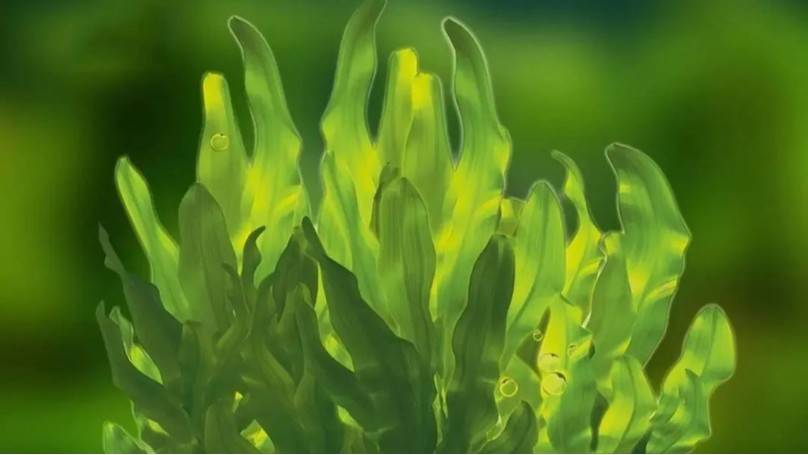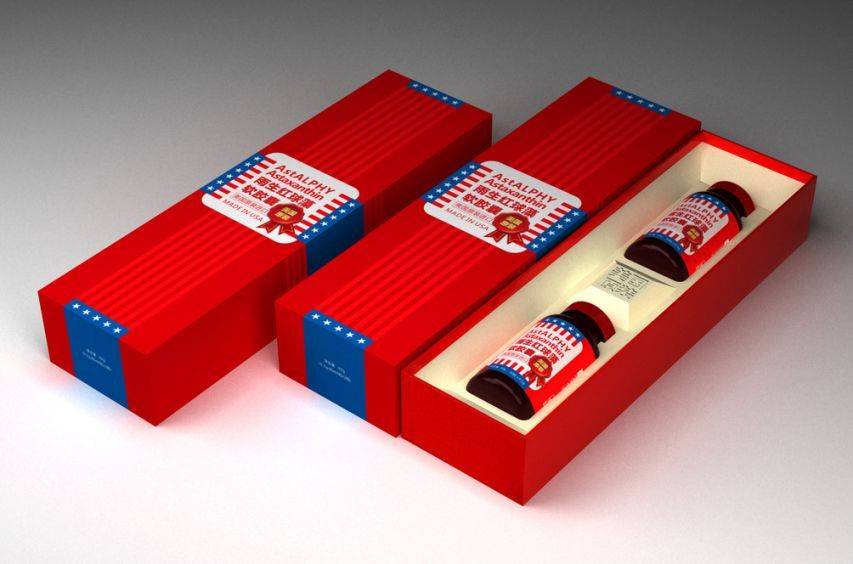How Does Green Spring Technology's Astaxanthin Raw Material Overcome Compatibility and Solubility Challenges?
InR&D laboratories, astaxanthin has become a “love-hate” ingredient for formulators. While it boasts exceptional antioxidant properties, compatibility and solubility issues often halt innovative products at the laboratory stage.
“We urgently need an astaxanthin raw material that maintains activity while adapting to complex formulations.” This has become the shared sentiment among numerous R&D professionals. Whether it'です precipitation in functional beverages or compatibility challenges in skincare products, these technical bottlenecks are hindering product innovation.
The limitations of traditional astaxanthin raw materials are evident: it struggles to remain stable in clear beverages, readily interacts with other ingredients in complex formulations, and exhibits inconsistent bioavailability across different pH environments. These issues not only compromise product quality but also directly restrict formulation innovation and market expansion.
Today, this industry-wide challenge is poised for a fundamental breakthrough. Through technological innovation, Green Spring Technology has successfully developed a new generation of astaxanthin raw material. While maintaining exceptional biological activity, it overcomes the technical barriers of compatibility and solubility. This breakthrough empowers formulators to unleash their creativity more freely, developing innovative products with enhanced market competitiveness.
In this era where product innovation determines competitiveness, breaking formulation constraints is not merely about technological advancement—it's about securing a proactive position in market competition.

I. Technological Breakthrough: Three Core Technologies Solve Compatibility and Solubility Challenges
Green Spring Technology systematically addressed astaxanthin's compatibility and solubility challenges from molecular to application levels through its proprietary innovation platform.
1. Smart Microencapsulation Technology: Building a Stable Protection System
We have overcome the limitations of traditional single-layer wall materials by developing a novel microencapsulation system featuring a triple “core-shell-crown” structure:
Core Technological Innovations:
・Composite Wall Material Design: Precisely blending selected natural polysaccharides and plant proteins to form a dense, pH-responsive protective layer, ensuring astaxanthin stability across a wide pH range of 3-9.
· Interfacial Polymerization Process: Precisely controlled polymerization conditions build a uniform nanoscale protective shell on astaxanthin droplets, achieving stable encapsulation rates exceeding 98.5%
· Enhanced Thermal Stability: Special wall material combinations enable microcapsules to withstand 85°C heat treatment for 30 minutes, meeting processing requirements for most food and cosmetic applications
Application Performance:
In accelerated testing (40°C, 75% humidity, 90 days), astaxanthin encapsulated with this technology achieved 95.2% component retention in functional beverages, with color stability exceeding traditional products by over threefold.
2. Amphiphilic Molecular Structure Design: Achieving Autonomous Precise Dispersion
Through precise structural modification of the astaxanthin molecule, we developed an innovative ingredient with autonomous dispersion capabilities:
Technical Breakthroughs:
· Molecular Anchoring Technology: Introducing specific hydrophilic groups into the astaxanthin molecule endows it with self-emulsifying properties, enabling spontaneous formation of micelles with uniform particle size distribution (100-200nm) in aqueous phases.
· Dynamic Interface Regulation: The novel amphiphilic structure enables automatic adjustment of interfacial behavior under varying process conditions, ensuring compatibility with diverse emulsification systems and preventing phase separation.
· Competitive Adsorption Control: Molecular structure optimization prevents adverse adsorption competition between astaxanthin and other surface-active ingredients in complex formulations.

Practical Effect Validation:
In skincare emulsion systems, the modified astaxanthin raw material achieved zero migration and zero separation within 24 hours, demonstrating excellent compatibility with multiple common active ingredients (e.g., niacinamide, vitamin C derivatives, peptides).
3. Application Database Support: Providing Scientific Formulation Guidelines
Based on systematic analysis of over 1,200 formulation experiments, we established the industry's first intelligent astaxanthin compatibility database:
Core value of the database:
· Formulation compatibility map: Detailed interaction data between astaxanthin and 86 common food additives and 48 cosmetic ingredients
· Process parameter windows: Precise guidance on critical parameters like processing temperature, shear force, and pH range for different dosage forms
· Problem-Solution Library: Diagnosis and resolution guides for 47 typical compatibility issues, including precipitation, discoloration, and viscosity abnormalities
Application Case:
A client encountered solubility challenges while developing an astaxanthin solid beverage. By consulting the database, they identified an optimized formulation within just 3 days. The resulting product dissolved completely within 30 seconds after mixing and demonstrated shelf-life stability.
These three core technologies form a complete solution loop, fundamentally resolving astaxanthin application challenges while providing robust technical support for formulation innovation. Our goal is to deliver “plug-and-play” high-performance astaxanthin ingredients to every R&D professional, freeing innovation from technical constraints.
II. Application Validation: Multi-scenario Testing, Exceptional and Reliable Performance
Leveraging breakthroughs in core technologies, Green Spring Technology's astaxanthin ingredients demonstrate outstanding performance across diverse applications, providing robust assurance for product innovation.
1. Functional Beverage Application: Overcoming Transparency System Technical Barriers
Technical Challenge:
Traditional astaxanthin tends to precipitate, separate, and fade in acidic transparent beverages, severely compromising product appearance and quality.
Solution Outcomes:
· Stability Performance: In a lemon-flavored functional beverage at pH=3.5, after 90 days of accelerated testing at 40°C, ingredient retention reached 95.2% and color retention reached 94.8%.
· Compatibility Validation: Excellent compatibility with common functional ingredients like Vitamin C, B vitamins, and taurine, with no precipitation or separation.
· Process Adaptability: Withstands 85°C instant sterilization, maintaining stability during filling, sterilization, and other production stages.
Customer Case:
A renowned sports drink brand successfully launched the first transparent astaxanthin functional beverage using our ingredient, achieving a 45% repurchase rate within six months of market release.

2. Skincare Formulation Application: Achieving Comprehensive Compatibility
Technical Challenge:
Astaxanthin tends to migrate and precipitate in complex emulsion systems, compromising product stability and user experience.
Solution Effectiveness:
· System Compatibility: Demonstrates stability in water-in-oil, oil-in-water, and multi-emulsion systems; blends well with active ingredients like niacinamide and retinol
· Enhanced Texture: Nano-micelle structure eliminates greasiness while improving spreadability and absorption
· Efficacy Retention: Over 92% active ingredient retention rate maintained for 6 months in serums, lotions, and creams
Client Case:
A premium skincare brand successfully developed a dual-action “antioxidant + repair” serum using our ingredients, achieving 100% product stability test pass rate.
3. Innovative Formulation Breakthroughs: Expanding Application Boundaries
Solid Beverage Applications:
· Instant Solubility: Fully dissolves within 30 seconds in 40°C warm water
· Flavor Compatibility: Blends well with diverse fruit and tea flavors without adverse taste interactions
· Storage Stability: Over 90% ingredient retention within 12 months in aluminum foil packaging
Gummy Applications:
· High-Temperature Tolerance: Withstands 85°C cooking processes with less than 5% processing loss
· Color Stability: Maintains uniform, stable coloration across various pectin and gelatin systems
· Texture Preservation: Does not affect gummy elasticity or chewiness
Case Study:
A health food company successfully developed the world's first transparent astaxanthin gummy using our raw material. The product quickly became the category sales leader upon launch.
III. Translating Technical Advantages into Market Competitiveness
Green Spring Technology's astaxanthin raw material solutions deliver significant value enhancement for clients:
1. Doubled R&D Efficiency
· Shortens formulation development cycles from 3-6 months to 2-4 weeks
· Increases first-pass trial production success rate from 40% to over 85%
· Significantly reduces repetitive testing and raw material waste
2. Product Innovation Breakthroughs
· Enables development of innovative formulations like transparent beverages and water-based essences
· Helps establish unique technical selling points for products
· Gains higher market visibility and consumer recognition
3. Exceptional Quality Performance
· Ensures stable product color and content throughout shelf life
· 35% enhanced bioavailability with significantly improved efficacy
· Substantially increased consumer repurchase rate and satisfaction
4. Significant Return on Investment
Based on client data:
· 30-40% reduction in development costs
· 45-60 day accelerated product launch
· Average 25% increase in market share
Green Spring Technology is committed to driving industry progress through continuous technological innovation, delivering more competitive raw material solutions for our clients.
IV. Partner with Us
We invite you to collaborate with Green Spring Technology and experience the innovative breakthroughs of next-generation astaxanthin raw materials.
Dedicated Services
· One-on-one support from our professional technical team
· Complimentary sample testing and formulation optimization
· Comprehensive technical documentation and testing reports
连络
Tel: +86 29 88313578
Phone: +86 13649243917
Email: helen@greenspringbio.com
Website: https://www.greenspringnatural.com
Take Action Now
· Request technical documentation
· Apply for sample testing
· Schedule expert consultation
Let’s collaborate to create your next star product!
参考:
[1]Bon J A,Leathers T D,Jayaswal R k. 以上のアスタキサンチンの分離- ミュータントを生産し pha " " ia rhodozyma [j]。 バイオテクノロジー 1997年(平成9年)2月1日:9 - 12号線開通。
[2Fang T J,chiou T y. 酵母pha " " ia rhodozyma nチュウ- fs5o1 [j]の変異体によるアスタキサンチンのバッチ栽培と生産。 日刊産業微生物学1996年(平成8年)(16)- 175 ~ 181だった。
-
Prev
Natural Astaxanthin: The Key to Premium Feed Formulations
-
次
Achieve Perfect Color Uniformity with a New, Highly Stable Astaxanthin


 英語
英語 フランス
フランス スペイン
スペイン ロシア
ロシア 韓国
韓国 日本
日本




